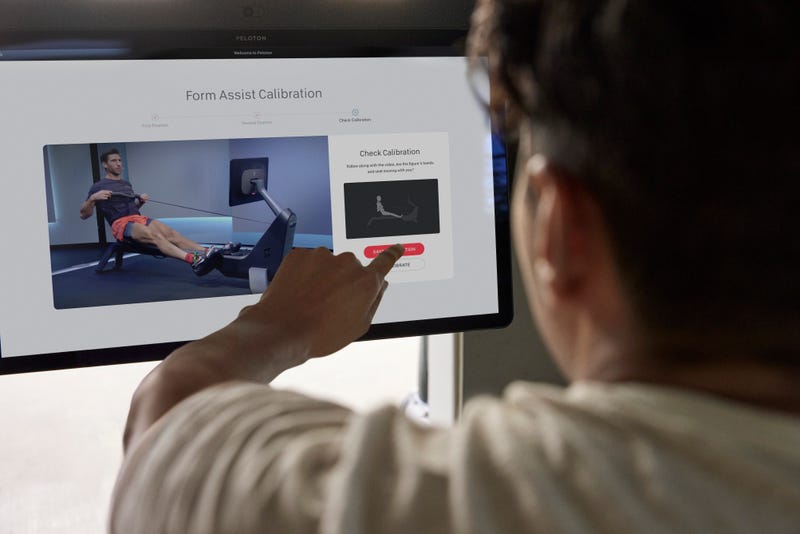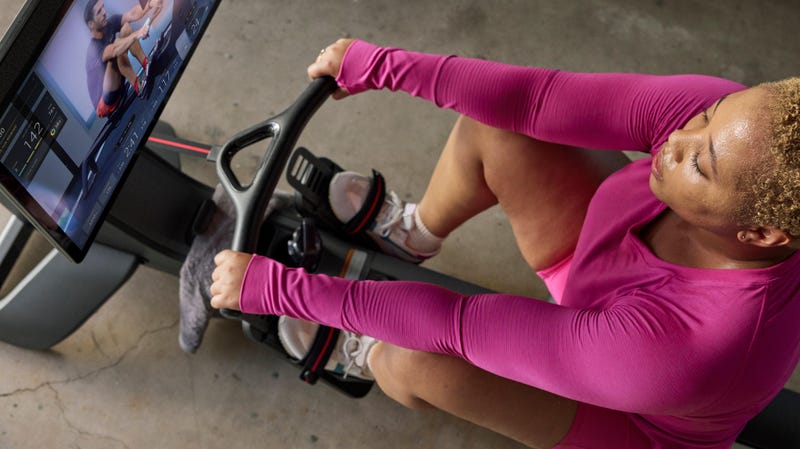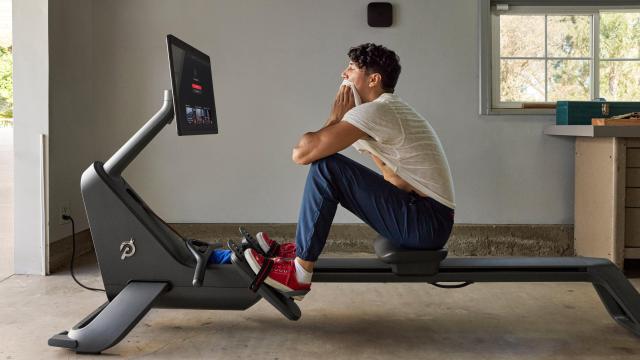The first thing I noticed about the Row was that it spanned my entire living room. When stored standing upright, it loomed over my apartment like a spaceship from Arrival. I wouldn’t recommend this machine if you live in a one-bedroom apartment like mine. You’re better off with a Peloton Bike, which we loved.
It’s also $3,195 when you convert it to AUD. I would not pay much to have a single-function machine occupy that much of the minimal free space in my living room.
Rowing is a punishing, unforgiving form of exercise. I’m a rower with a low skill level. I rowed for one semester in high school. Our coach instructed us on the right way to ride the seat back and forth in “the drive”—pushing with your legs and rowing with your arms—and “the recovery”—returning to the bent-leg starting position.
That taste of rowing is not enough incentive to buy this machine. The Peloton Row eased and incentivized me with its classes—classes that I feel I could not find anywhere else. There is less of a group exercise culture surrounding rowing than biking or even treadmill running, making the ergometer an odd outlier and a unique offering. Would I use the Peloton Row at the gym? Absolutely. With built-in classes and AI-assisted form evaluation, the Row strikes a midpoint between an unguided workout machine and a personal trainer. It would slot into a solo workout nicely.
I was already a longtime fan of the Peloton app when I started testing the Row. I use the app nearly every day to take yoga classes on the floor of my apartment or track runs in nearby parks. It is an excellent motivator that benefits from sustained use. I’m pretty attached to the streak of workouts recorded by the app. I’ve grown fond of all the yoga instructors and bored friends at length talking about the subtle differences between their workout styles.

Peloton Row Performance
It’s a heck of a workout
When testing out the Row, I wanted to know if the app’s offerings would replicate the feelings of challenge and encouragement I’ve found in the yoga classes. I like the choice of degree of difficulty, class style, and instructor.
The Row delivered. Peloton has published a catalogue of classes that complement the Row well. The classes geared towards the ergometer produced the same feeling of attachment I’ve found to be the Peloton app’s secret sauce. I liked the long endurance classes with Alex Karwoski and the cheery motivation of Ash Pryor. I got something different from each instructor’s course.
The Row’s physical form factor works well. The seat is firm, the slide back on the drive is smooth, and the footholds keep my feet comfortably in place. Though you can, I never needed to change the handle’s resistance.
I wish the Row’s workout classes had a “skip 10 seconds forward or backward” feature like the iPhone’s video player or Netflix’s app. I have a problem with Row’s software and the Peloton app overall. It is impossible to quickly go back even though it is likely that you might miss instruction in a class and want to try repeating a move you didn’t land the first time. It is a minor but frustrating inconvenience.
The Row also comes with a large screen that displays the classes brightly. I wished I could pick shows to watch while I rowed. Peloton seems to know that and is beta-testing integrations with YouTube TV. I don’t subscribe to that service, but I imagine others will be added in the future. I watched Jeopardy! on my phone while I went for timed rows or specific distances.
The selection scenery of the machine’s “Just Row” offerings was pleasant. By the design of the selection interface, it felt like Peloton was prompting me to take a class any time I booted up the machine, emphasizing its point of differentiation rather than rowing on my own as I would on another ergometer.

The Row’s screen displays typical statistics like your 500-meter split time, your strokes per minute, and the distance you would have travelled were you on the water, as you would expect from any ergometer. It ranks participants on a class leaderboard by “total energy output.”
Beyond the classes, the Row boasts another differentiating factor: My Form Assist, which follows and evaluates your stroke via the camera on the screen. According to Peloton, “tens of thousands” of users have tried the AI-enabled feature since June. Form Assist is an elegant solution to attempt an unfamiliar type of workout alone. Rowing is not immediately legible, unlike stationary biking or running on a treadmill. It is easy to give yourself a repetitive injury doing it.
The tracking of your movement works well. The instructions are subtle—“Opening up too early.” They require you to understand how to make adjustments, which I eventually got the hang of. A Peloton spokesperson said, “After only four weeks, Row users saw an average of 10% improvement in their form rating,” particularly in their “drive,” the part of the stroke when you push with your legs and pull on the oar stand-in.
Who is the Peloton Row for?
A person ready to spend three thousand dollars on a rowing machine is either someone who already rows daily or a Peloton obsessive. The former is likely enmeshed in a community of other rowers who will recommend a product that caters more specifically to enthusiasts. The latter already owns the Bike and the Tread and wants to see what the app’s rowing classes are all about. Maybe the buyer Peloton had in mind was keen on offering beginners a less intimidating option than the blank stare of a regular ergometer’s statistics.
Peloton itself markets the Row to beginners. According to a spokesperson for the company, “85% of Row users were no-experience/beginners.” Who wants to drop $US3,000 on a machine they’re not good at using? Somebody does and already has—more total energy output to them. It’s not on the Australian Pelaton site yet, wonder if it’s ever going to come……
